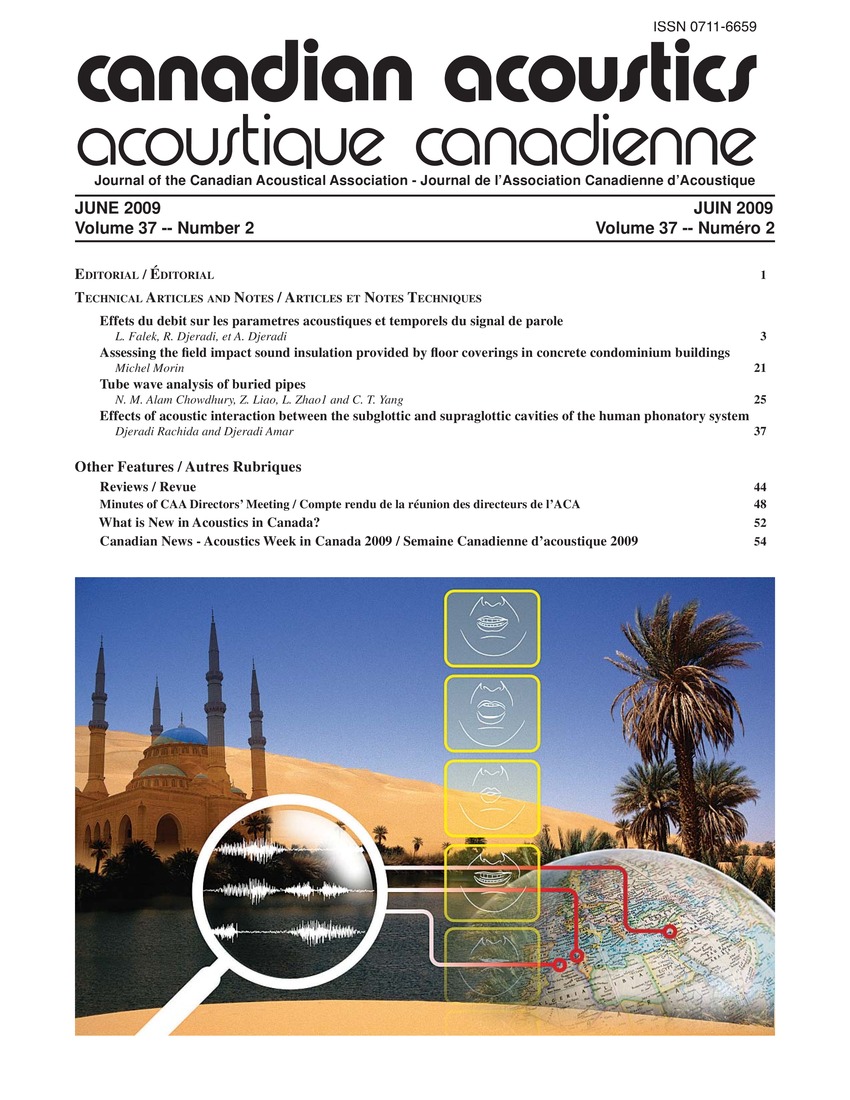Effects of the delivery on the acoustic and temporal parameters of speech
Keywords:
Linguistics, Motors, Algiers, Compensatory strategy, Different speed, Geographical area, Motor control, Second language, Speech rates, Temporal modelsAbstract
This study treats the effects of speech rate in a second language. Six speakers from different geographical areas have produced sentences in written Arabic, carrying fricatives (Arabic specifications), at different speeds of elocution. The selected speakers are: two Lebanese (CH and LI), two inhabitants of Algiers (FE and MA) and two Kabyles (SAand NA, in northern east of Algiers). The purpose of this study is to highlight the compensatory strategies adopted by each speaker with flow constraint. The study carried on the temporal and frequential (formantic) analysis of CVC that are extracted from the corpus sentences, has shown differences on the level of the temporal model (relative durations of CVC compared to the sentence duration) and frequential model (formants values Fl and F2 of the vowel of the considered CVC), in fast flow. These differences can be related to the spoke of the speakers, such as: - Fixed temporal models with variable frequential models and a total centralization of the vowels for the Lebanese speakers (CH and LI). The compensation is made only on the frequential level (one compensation), which could make think of a good motor control in flow constraint. - Variable temporal models with constant frequential models and very little centralization, for Algiers speakers (FE and NA). The compensation is only made on the temporal level (one compensation), which could make think of less smooth motor control than CH and LI in flow constraint. - Variable temporal and frequential models and little centralization (less than CH and LI and more than FE and NA) for speakers SA and MA. The compensation is made on both frequential and temporal levels (two compensations). This could make think of a relatively bad motor control in flow constraint. The compensatory strategies adopted by these three types of speakers seem to emphasize on the closely dependency to the second language, namely the written Arabic.Additional Files
Published
How to Cite
Issue
Section
License
Author Licensing Addendum
This Licensing Addendum ("Addendum") is entered into between the undersigned Author(s) and Canadian Acoustics journal published by the Canadian Acoustical Association (hereinafter referred to as the "Publisher"). The Author(s) and the Publisher agree as follows:
-
Retained Rights: The Author(s) retain(s) the following rights:
- The right to reproduce, distribute, and publicly display the Work on the Author's personal website or the website of the Author's institution.
- The right to use the Work in the Author's teaching activities and presentations.
- The right to include the Work in a compilation for the Author's personal use, not for sale.
-
Grant of License: The Author(s) grant(s) to the Publisher a worldwide exclusive license to publish, reproduce, distribute, and display the Work in Canadian Acoustics and any other formats and media deemed appropriate by the Publisher.
-
Attribution: The Publisher agrees to include proper attribution to the Author(s) in all publications and reproductions of the Work.
-
No Conflict: This Addendum is intended to be in harmony with, and not in conflict with, the terms and conditions of the original agreement entered into between the Author(s) and the Publisher.
-
Copyright Clause: Copyright on articles is held by the Author(s). The corresponding Author has the right to grant on behalf of all Authors and does grant on behalf of all Authors, a worldwide exclusive license to the Publisher and its licensees in perpetuity, in all forms, formats, and media (whether known now or created in the future), including but not limited to the rights to publish, reproduce, distribute, display, store, translate, create adaptations, reprints, include within collections, and create summaries, extracts, and/or abstracts of the Contribution.


